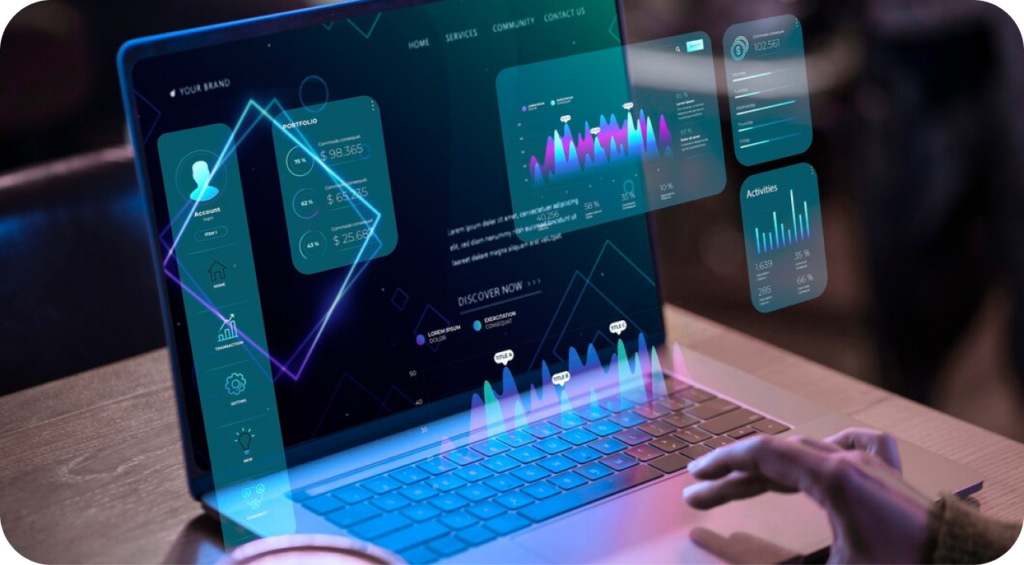In today’s digital marketing landscape, where brands aim to establish a strong online presence, spending crores on this, understanding the complexity of attribution has become essential. The process of identifying and assigning credit to the various marketing channels that contribute to a conversion. This practice has evolved significantly in the age of Martech , where an array of tools and technologies have transformed how we track and understand customer interactions and journeys.

The Complex World of Attribution
In the battle to drive brand awareness, retention, and conversions, marketers deploy their campaigns across multiple platforms and channels. These channels include social media, email, search engines, and more. Each interaction a customer has with a brand, be it a click or impression on an ad, a visit to a website, or an email open, can potentially influence their path to conversion.
However, attributing conversions to the right marketing channels is no simple task. It involves tracking multi-touchpoint interactions both online and offline. Here are some of the key challenges:
- Attribution Windows:
An attribution window refers to the timeframe during which conversion events can be attributed to a particular channel or touchpoint. Marketing channels attribute conversions within defined attribution windows, which can vary from platform to platform. These windows can vary significantly from platform to platform, and their selection can have a major impact on how conversions are counted and allocated.
Consider a user who initially clicks on a Facebook ad but converts through an organic search several days later. The question arises: which channel should receive credit for the conversion? Different marketing platforms employ different attribution window settings, creating potential discrepancies and inaccuracies in conversion tracking.
Setting the Right Attribution Window:
Choosing the right attribution window is a critical decision. Different businesses may require different attribution windows based on their goals, user behaviours. The default attribution window for click-through attribution in platforms like Google Ads is typically seven days. This means that conversions occurring within seven days of a user clicking on an ad are attributed to the click and in case of facebook its one-day view and a 28-day click. Users in facebook can set windows between click-through attribution or view-through attribution or select both as well as pick a one as 28-day window for both views and clicks.
- View-Through Attribution:
View-Through Attribution (VTA) is a critical aspect of attribution, particularly when it comes to evaluating the impact of initial ad impressions. It addresses scenarios where a user views an ad but doesn’t immediately convert. Instead, they return via organic search or another channel to complete a desired action.In traditional attribution models, the last-click channel often receives sole credit for the conversion, which can underestimate the value of initial ad impressions. VTA ensures that these impressions receive their due credit in the attribution process.

Use Case for View-Through Attribution:
Imagine a user who views an ad on Facebook, YouTube, or TikTok but doesn’t convert right away. Later, they return through organic search or another channel to make a purchase or take a desired action. Without VTA, these conversions might be attributed to organic sources, leading to partial insights and inadequate budget allocation.
Incorporating VTA into your attribution strategy is crucial for acknowledging the role of impressions in influencing user actions. It helps:
- Recognize the impact of initial ad impressions on conversions.
- Avoid falsely attributing conversions to organic sources.
- Gain more accurate insights into the effectiveness of ad campaigns.
Attribution Window for View-Through Attribution:
The attribution window for VTA typically spans 24 hours to 30 days after a user has seen the ad. Conversions that occur within this timeframe can be attributed to view-through impressions. However, conversions occurring outside this window are not attributed to VTA.
It’s important to note that the longer the time gap between an impression and a conversion, the less apparent the connection becomes.
Shorter attribution windows are often preferred for more realistic and actionable results in the context of VTA. Majority of the brands where the conversion window is shorter, 1 Day VTA is generally followed. VTA may be viable in case of brand awareness campaigns, multi touch point journeys.
- Click-Through Attribution:
Click-Through Attribution (CTA) places a stronger emphasis on user actions, particularly when they click on an ad and immediately take a conversion-related action. It attributes conversions directly to the channel or touchpoint responsible for the last click before the conversion event.CTA is well-suited where user actions align closely with conversion intent. When users actively click on an ad and promptly complete a desired action, CTA provides a clear and direct attribution path. It is particularly effective for:
- Measuring the immediate impact of ad clicks on conversions.
- Tracking the performance of campaigns that rely on direct call-to-action messaging.
- Gaining insights into the effectiveness of campaigns with clear conversion goals.
The Most preferred click-Through Attribution window in many platforms is seven-days click. But it depends from business to business. In many cases attribution less than 7 days or three-days window may give you better insights.In many cases, businesses may benefit from using a combination of both VTA and CTA, customised to their specific needs. Balancing these attribution models can provide a comprehensive view of user journeys. Customization options often allow businesses to adjust attribution windows based on their objectives and user behaviours. For example, you might use a longer VTA window for brand awareness campaigns and a shorter CTA window for direct response campaigns.
- Cross-Device Attribution
Consumers today interact with brands across various devices, from laptops to smartphones and tablets. Mapping the user journey across these devices is a challenge. Until a user logs in or signs up, marketers must keep track of all touchpoints through which the user landed on their product. This often involves storing unique identifiers in cookies. However, rising privacy concerns have pushed marketers to explore alternative tracking methods, including cookie-less tracking and handling incognito browsing sessions.
One of the key solutions to these attribution challenges is cross-device attribution. This approach seeks to understand how customers interact with a brand across multiple devices. By tracking user behaviour across various devices, marketers can optimise the customer experience at each touchpoint, leading to better campaign performance and improved ROI.
Cross-device data provides insights into customers’ digital behaviours, interests, and preferences across devices. This data can be used to create highly targeted campaigns and personalised experiences tailored to customers’ needs.
However, achieving accurate cross-device attribution is not easy. The primary reason other attribution methods can provide reasonably accurate results is because they rely on cookies stored on a consumer’s device to identify and track them. Since cookies are not interchangeable between devices, each device must be identified differently.

Techniques for Cross-Device Attribution
- Deterministic Matching: This method involves identifying the same user across different devices by connecting the same unique identifiers together.
- Probabilistic Matching: This approach uses a range of different data sets and algorithms to make probable connections. Data used may include IP addresses, device IDs, browser types, interests, web history, location, and language settings
In the face of these challenges, Martech has introduced the concept of forming a unique fingerprint ID for each user. This ID combines various user parameters such as browser, device, location, and more, making it useful in probabilistic matching and identifying a unique user in cookie-less tracking and incognito mode.
- Martech
Martech tools have played a crucial role in addressing these attribution challenges. Here’s how:
- Redirecting Marketing Spend: Martech tools help shift marketing spend from ineffective channels to the most productive ones by providing insights into each marketing platform’s true impact.
- Optimising Campaigns: They optimise current and future campaigns by identifying effective touchpoints, thereby improving conversion rates and ROI.
- User Identification: In today’s multi-device landscape, Martech assigns unique IDs to users, an important step in accurately attributing conversions.
- Data-Driven Insights: Martech tools offer data-driven insights, enabling marketers to make informed decisions and tailor campaigns to their target audience.
- Integration: Martech software seamlessly integrates with various marketing tools, aligning sales and marketing teams for more cohesive strategies.
- Attribution Models
When it comes to attribution models, there isn’t one approach. Different models exist to help marketers understand the user journey. Here are some common attribution models:
- Last Click Attribution: Credits the last interaction before conversion.
- First Click Attribution: Credits the first interaction.
- Linear Attribution: Equally credits all touchpoints.
- Time Decay Attribution: Gives more credit to closer-to-conversion touchpoints.
- Position-Based Attribution (U-Shaped): Emphasises the first and last interactions..
- Data-Driven Attribution: Analyses large datasets for accurate attribution.
- Position-Based Attribution (W-Shaped): Includes key touchpoints.
- Last Non-Direct Click Attribution: Considers non-direct visits for conversion attribution
The choice of attribution model varies from one industry to another. In e-commerce, the last-click attribution model is often preferred due to its significant impact. When it comes to initial customer acquisition, the first-click attribution model tends to be more suitable. Additionally, the last non-direct click attribution model holds essential importance in understanding the sources other than direct or organic. This is because there’s typically no purely organic search; every user typically lands on a product through some source or reference. Therefore, the last non-direct click attribution model plays a crucial role in tracking and attributing these user journeys.










